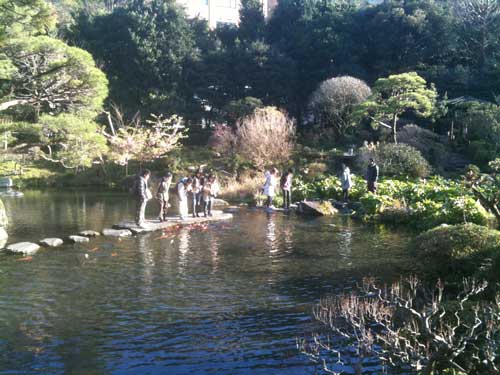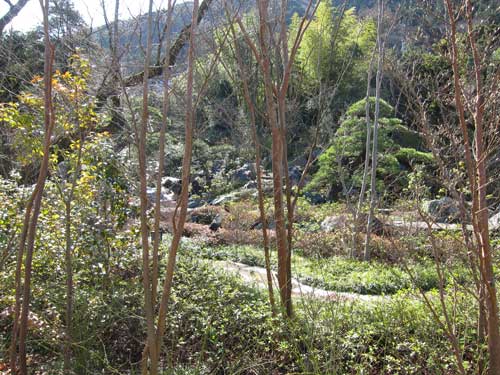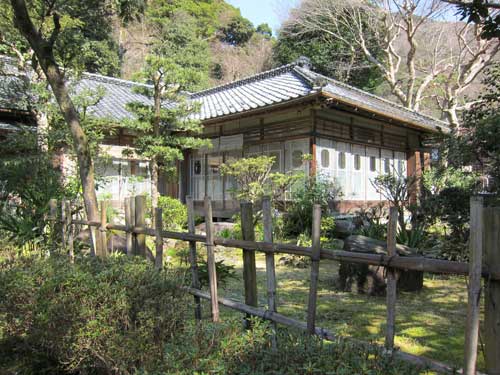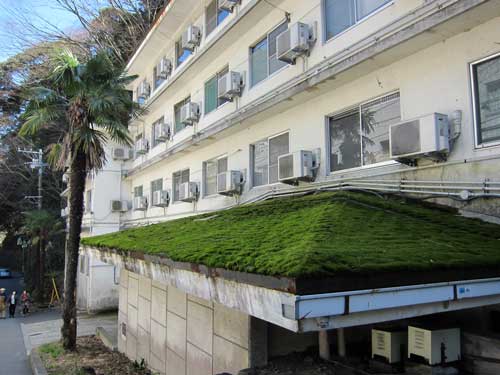
晩秋、箱根駅のまわりの建物は山の色と共鳴します。

Now that I have posted about Hakone moss outside the organized visit, I will also share some images from the Nodai school trip. Above you can see how many students, faculty, and research fellows participated on the trip by counting the shoes.

We stayed at Hotel Yoshiike, a ryokan with an amazing Kyoto style stroll garden that is large and other worldly. The buildings are very 1960s style boxes, but the gardens make you lose track of both time and place. There is something truly masterful about the streams and pond, the wandering paths, the careful plantings and attentive maintenance.
In addition to appreciating the garden, there were enormous meals, much drinking, and onsen bathing.

The other stunning garden we saw was designed for Yamada Denki’s corporate villa by one of Japan’s most celebrated contemporary landscape designer, Sakakibara Hachiro, who also created the modern Japanese garden at Tokyo MidTown. The contrast between the two gardens is stunning: while Yoshiike is flat and terraced, Sakakibara’s is vertical and borrows from the surrounding landscape of steep, forested hills. There is a lot of drama and movement in the garden in terms of waterfalls and paths.

The Tenseien shrine turns a (mostly?) natural waterfall into a shrine. I had never seen the Shinto rope and paper decorations attached to a waterfall.

We also visited this charming Meiji-era house, a small “out-building” attached to a larger villa. The image at the top with the shoes came from this entrance.
More photos after the jump.

On a Nodai Garden Laboratory trip organized by Hattori sensei, I visited some amazing gardens and shrines, and stayed at a beautiful ryokan called Yoshiike. What I did not expect to see were these incredible moss roofs and walls in unexpected places.
While I love designed gardens, I am also amazed at how nature can impose itself on our built environment, creating beauty in unlikely places. I like the idea of the garden extending itself into the everyday.

Even mundane structures come alive when we let nature colonize our habitat.
